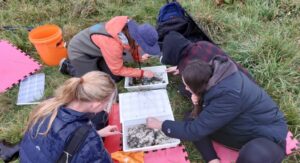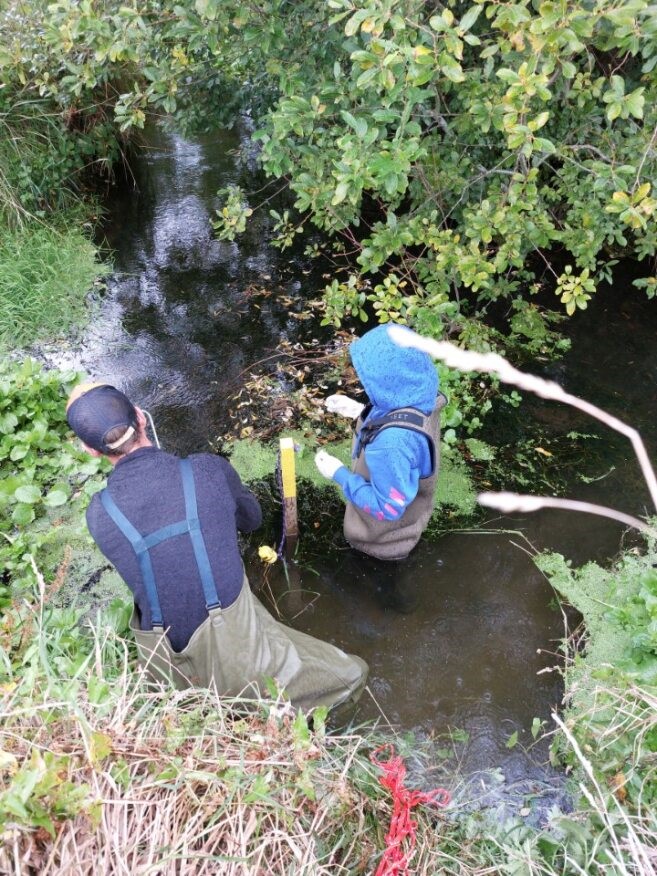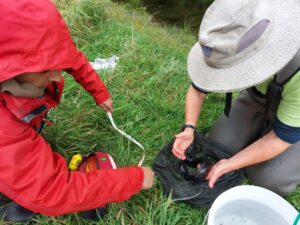Developed in partnership with Enviroschools, a stream monitoring ways to engage year 13 students in relevant fieldwork during typically content-heavy NCEA assessments. It is hoped the pilot will eventually be adopted as a means of formal assessment as part of the school’s localised curriculum.

Students from Lincoln High identify and count dislodged macro-invertebrates.
Ecological data captured by Year 13 Lincoln High School students during a field trip to Tārerekautuku Yarrs Lagoon will be used by Selwyn District Council and others to guide future management of the site.
Tārerekautuku Yarrs Lagoon is one of the largest freshwater wetland habitats remaining in the low plains of the Selwyn District. It is located near the Lincoln township in the Ararira/LII River sub-catchment of Te Waihora/Lake Ellesmere and was once an important mahinga kai (food gathering) site for Ngāi Tahu.
The group of year 13 ecology students braved a raging southerly to take part in a pioneering monitoring programme, alongside Environment Canterbury staff and experts from Department of Conservation (DOC) and Lincoln University.

Collecting an eDNA sample for analysis.
“Not only did I gain hands-on practical skills that I could put into my future studies, it allowed me to learn more about scientific methods – and to explore the concept of eDNA. We were able to look at scientific practices beyond the classroom environment, and what NCEA teaches us. We also linked the skills that we got out of our first internal (practical investigation) to what we were meant to do on the trip. I’m very grateful that we were given this opportunity.” – Farah Aladen, ecology student
This pilot developed in partnership with Enviroschools provides experiences and technical support for real-life science that aligns with NCEA assessment requirements. It’s inspired by the school’s Head of Science Willem Tolhoek’s ‘vision’ for students to experience real science beyond the confines of the school laboratory.
“It’s important that we apply what students learn in the classroom, by connecting them with experiences within their local community. In this instance, students could hone their skills and knowledge alongside those who’ve transferred their passion for science into a career.” – Head of Science, Lincoln High School
It is hoped the pilot will eventually be adopted as a means of formal assessment as part of the school’s localised curriculum.
- A student and Freshwater ecologist Helen McCaughan record the length of a tuna/longfin eel.
- Retrieving the fish trap.







